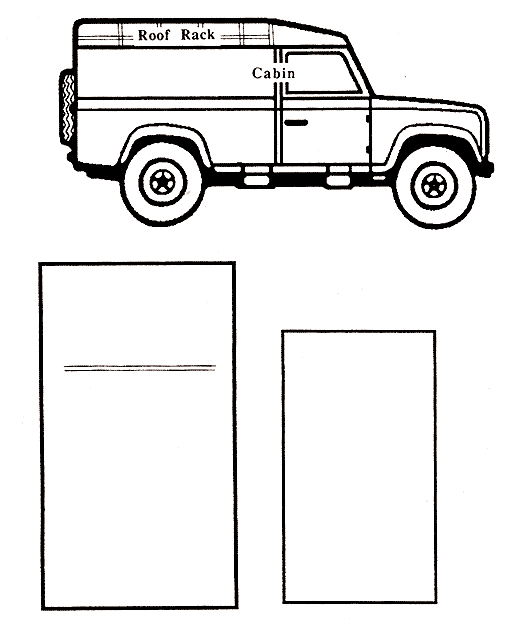|
Walking with the Dinosaurs Lab - Part 1 Note: Remember you are responsible for graphs, charts and other items that form part of the overall summary of this topic. Upon completion, the Walking with the Dinosaurs Lab activity will introduce you to the life of a paleontologist from the planning of an expedition, to the actual dig of a dinosaur skeleton and finally to the building of a dinosaur showcase. Be sure to familiarize yourself with the Paleontological Studies notes; geologic timeline and extinction theory notes as you complete this lab. You may also wish to visit the Walking With Dinosaurs website. Be sure when completing the lab report, that you follow the given format. Vocabulary
Background A successful expedition to a foreign land requires an enormous amount of advance planning. Many expeditions take place in remote areas far from running water, electricity, telephones, or hospitals. The location of the fieldwork and the size of the team are important factors that govern the selection and quantity of supplies and equipment. Vehicles, food, camping equipment, and medical supplies are just a few of the things that need to be chosen carefully. You must plan thoroughly because you probably will not be able to acquire equipment or additional supplies once you are in the field. On the other hand, you can bring only essentials, because the trucks can carry only a limited amount of weight. Expedition Preparation How are you going to get more than a dozen people across the desert and back? What if one of the vehicles breaks down? What will the team eat? How much will they eat? Where will the team sleep? What if someone gets hurt? When planning an expedition, these are just some of the questions you need to answer. Vehicles The team needs lightweight, maneuverable vehicles to transport people and supplies across the desert and to search for fossils in rocky or sandy terrain. A single large truck would be too slow and would not allow team members to conduct field operations in several places simultaneously. Land Rover trucks would suit the expedition well. Each vehicle has seats for four (4) passengers; storage space for food and gear; a roof rack for carrying additional equipment; two (2) spare tires; a box of spare parts and two (2) dozen 20-liter containers (called "jerry cans") for fuel and water. Food Consider the following: if 15 people ate five (5) lbs. of food each day for 90 days, the total weight of food consumed would be 6750 pounds! This weight, added to the weight of equipment and supplies, would exceed the carrying capacity of most vehicles. By taking dehydrated food, the team would be able to cut total food weight down to 2500 pounds. Fresh meat and vegetables are hard to find in the desert. Pasta and rice serves as an excellent food base along with sauces and stews made from dried meat; dried vegetables; soup mixes; tomato powder and spices. Dessert consists of freeze-dried ice cream bars! Granola with powdered milk and instant oatmeal with dried fruit makes for a healthy breakfast. Lunch usually would consist of leftovers from the previous night. Camping Equipment Each team member has his or her own tent; sleeping bag and cot for the journey across the desert. Personal gear also consists of a small flashlight; pocketknife; hat; sunglasses; backpack and canteen. The team packs large tents for work at the field site one (1) to store field equipment; one (1) for study and work on fossils and one (1) that will function as the kitchen. Cooking takes place on gas stoves because electricity is not available. Camp lights run on electricity from car batteries that are recharged during the day in the vehicles. Medical Supplies Vehicle accidents and injuries from tools are the two most common emergencies in the field. Because most of the expedition will be spent more than 100 miles away from the nearest hospital, a fully equipped first-aid kit must be kept on hand. It includes cream and lotions for sun exposure; pills for common ailments; antibiotics for infection and a complete set of bandages. The medical kit would also include equipment for blood transfusions and a list of the blood type of each member; so that if there was a serious emergency, the team knows who has compatible blood types. Laboratory Activity Getting Ready The team must pack everything they will need during the four-month expedition into Land Rover trucks food; clothing; camping and cooking equipment and all geological gear. The carrying capacity of the trucks is the most important factor in deciding how much we are able to bring. In addition, there is only one way to bring enough food for the whole team for the four-month stay in the desert: you must use dehydrated food. Water is quite heavy a gallon weighs almost nine (9) pounds. Since dehydrated food has had all the water removed from it, the food we bring is much lighter than regular meat or fruit. Besides, regular meat and food would require refrigeration. Dehydrated food has long storage ability and you are able to rehydrate the food only when you need it. To view a typical packing list for a dinosaur expedition, click here. Directions You are in charge of one (1) expedition truck, in which you will carry yourself and three (3) other team members on a 4-month (120-day) expedition. You must take into account six (6) important packing rules:
The carrying capacity of your truck and other weight information is listed in the table below. Use this information to answer all questions. Be sure to show your calculations under each question.
Questions
Cabin ---------------------------Roof |
||||||||||||||||||||||||||||
